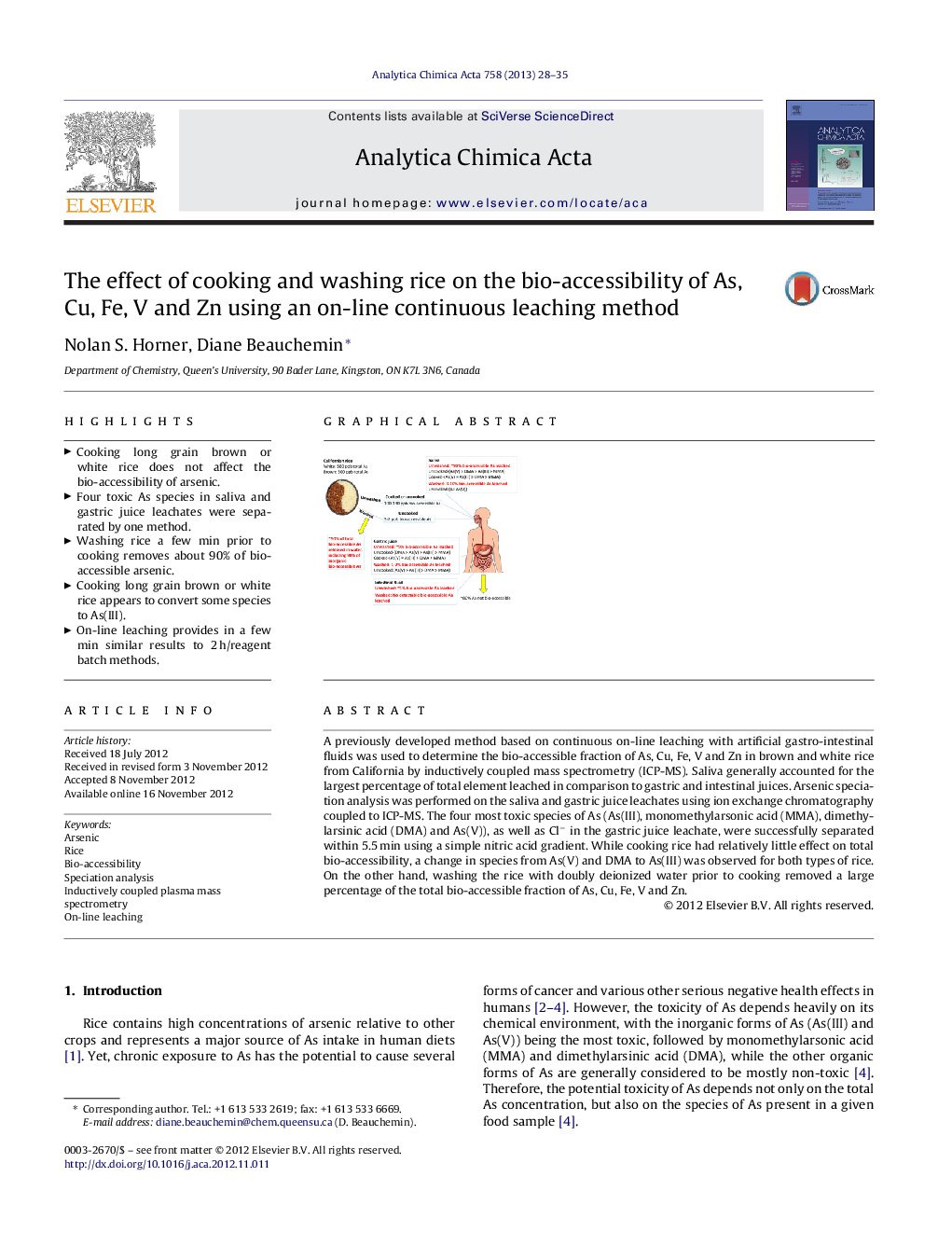| Article ID | Journal | Published Year | Pages | File Type |
|---|---|---|---|---|
| 1165632 | Analytica Chimica Acta | 2013 | 8 Pages |
A previously developed method based on continuous on-line leaching with artificial gastro-intestinal fluids was used to determine the bio-accessible fraction of As, Cu, Fe, V and Zn in brown and white rice from California by inductively coupled mass spectrometry (ICP-MS). Saliva generally accounted for the largest percentage of total element leached in comparison to gastric and intestinal juices. Arsenic speciation analysis was performed on the saliva and gastric juice leachates using ion exchange chromatography coupled to ICP-MS. The four most toxic species of As (As(III), monomethylarsonic acid (MMA), dimethylarsinic acid (DMA) and As(V)), as well as Cl− in the gastric juice leachate, were successfully separated within 5.5 min using a simple nitric acid gradient. While cooking rice had relatively little effect on total bio-accessibility, a change in species from As(V) and DMA to As(III) was observed for both types of rice. On the other hand, washing the rice with doubly deionized water prior to cooking removed a large percentage of the total bio-accessible fraction of As, Cu, Fe, V and Zn.
Graphical abstractFigure optionsDownload full-size imageDownload as PowerPoint slideHighlights► Cooking long grain brown or white rice does not affect the bio-accessibility of arsenic. ► Four toxic As species in saliva and gastric juice leachates were separated by one method. ► Washing rice a few min prior to cooking removes about 90% of bio-accessible arsenic. ► Cooking long grain brown or white rice appears to convert some species to As(III). ► On-line leaching provides in a few min similar results to 2 h/reagent batch methods.
